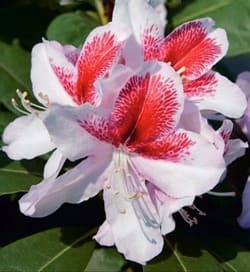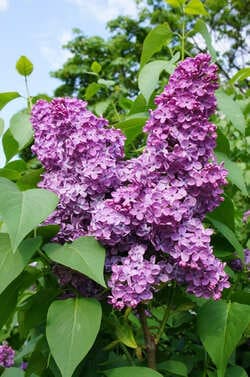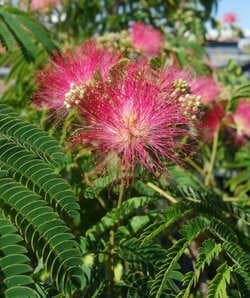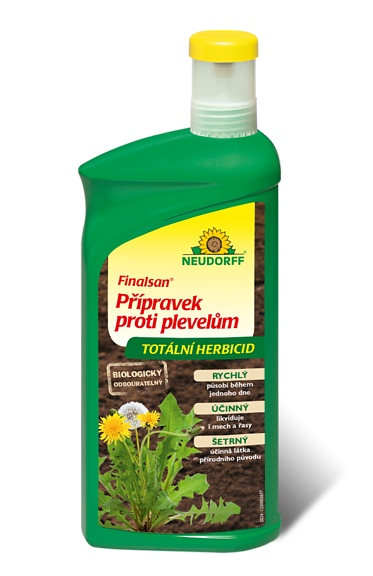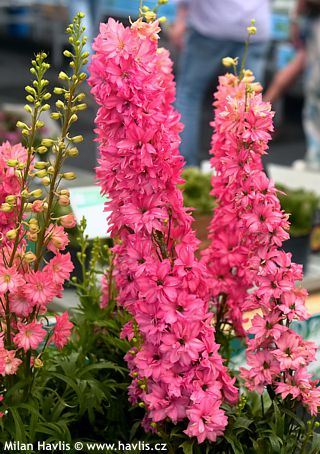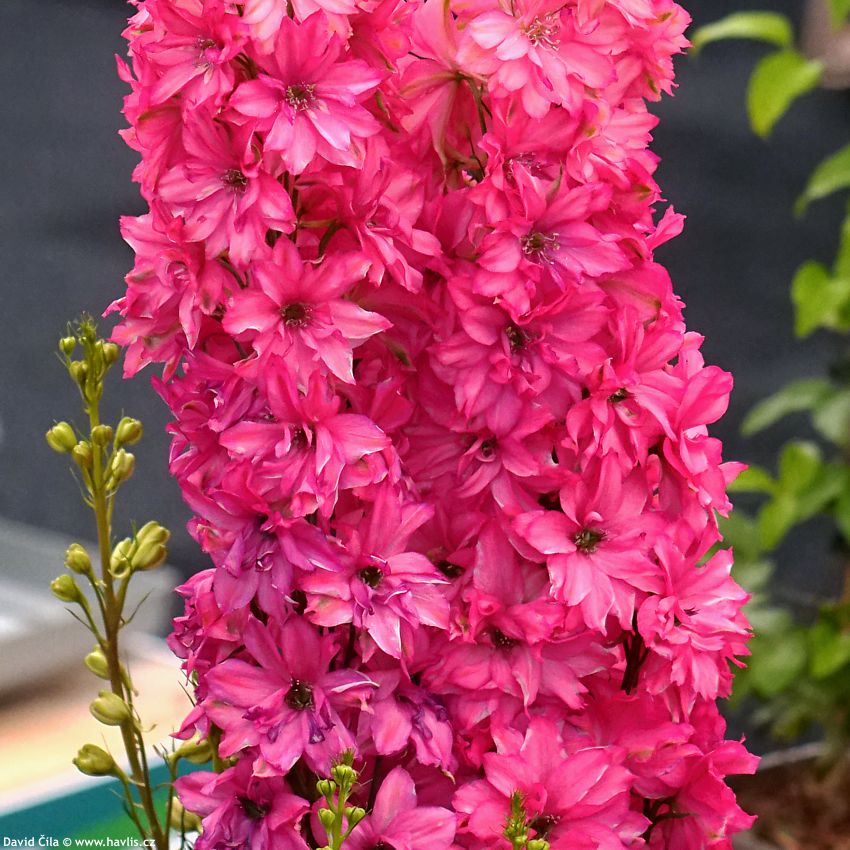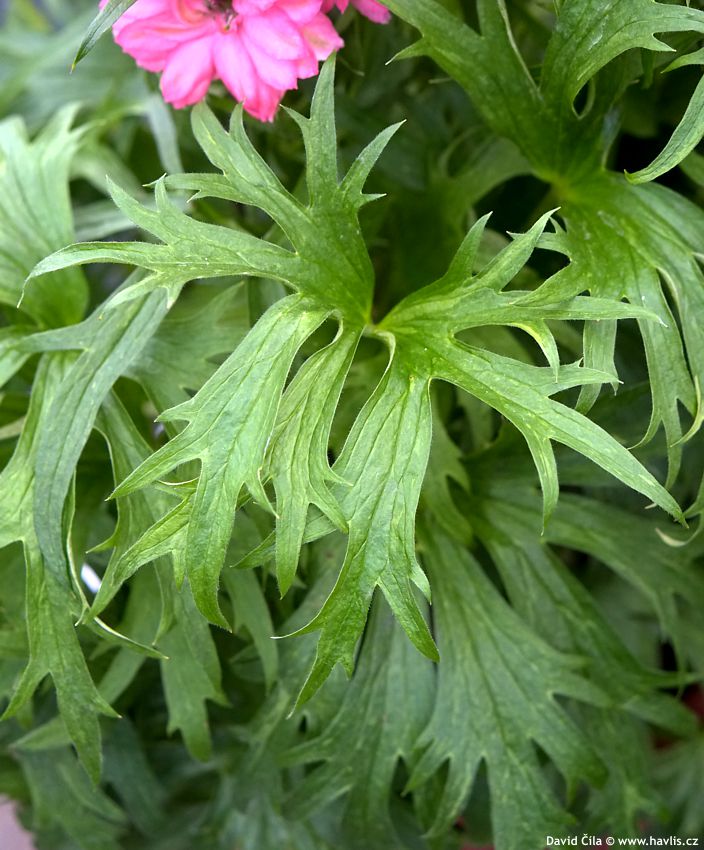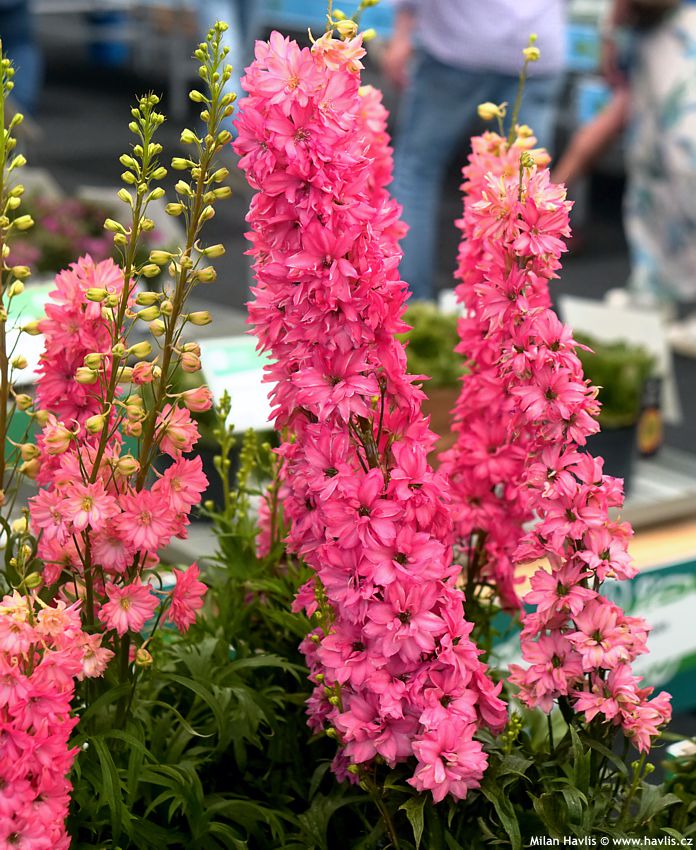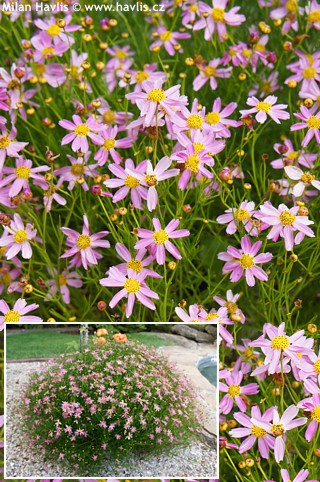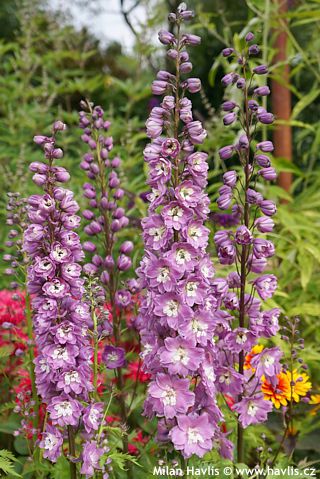Delphinium 'RED LARK' larkspur
Delphinium
Larkspur is a favourite perennial where varieties with blue flowers are most popular. Though, in modern gardens and better garden centres you can find new varieties with pink shades or even purple-red shades as well as white. The name delphinium was used to describe the shape of the flower bud which looks like a dolphin (rather fat one). There are several species that are hybridized with one another so often that in the horticultural world today, rather than species, they are classified as groups that differ from each other in appearance. They are Belladonna Group (upright growth, well-branched, upright, loose spikes with single flowers), Elatum Group (upright growth, often tall, dense spikes with large, single or double flowers), Pacific Hybrids (similar to Elatum but short-lived, rich coloured flowers ), grandiflorum (low growth, small flowers on low stems, short-lived or cultivated as annuals).
Red Lark delphinium was bred in 2007 by Robert Legro in Enkhuizen, the Netherlands, with the goal of creating the reddest possible cultivar, surpassing all previous varieties with pink flowers. Specifically, it aimed to outshine Princess Caroline, which is the closest in colour but significantly paler and taller. Interestingly, although it was brought to Chicago, USA, for tissue propagation as early as 2009, it wasn’t until 2023 that it captured the attention of the horticultural community. That year, it received the Retailers' Choice Award during the National Hardware Show (NHS) in Las Vegas focusing primarily on household, workshop, and garden products. In the same year, it debuted at the European Plantarium 2023 trade show, where it wowed visitors and earned the KVBC Silver Medal in the Best Novelty category. It was undoubtedly the most photographed exhibit at the event. The cultivar is protected under US patent no. PP29761, granted in 2018.
The flowers of Red Lark delphinium are a true masterpiece and a breakthrough in breeding. They are up to 4 cm across, fully double, and lack the typical “bee” in the centre. Arranged in upright racemes 40-50 cm long, the blooms showcase a vivid coral-pink to red hue that subtly transitions to softer tones towards the base, creating a beautiful gradient. The foliage consists of palmately lobed, deeply incised leaves in a medium green shade, forming a dense understory enhancing plant’s lush appearance.
Red Lark reaches a maximum height of 60 cm and has a compact, upright habit. This shorter stature makes it ideal for smaller gardens or as the front-to-middle row in perennial borders. The sturdy and resilient stems provide stability even in windy conditions, eliminating the need for staking. Additionally, they make Red Lark an excellent choice as a cut flower, allowing its unique colouration to shine in any bouquet. The intense colour, compact growth, and relatively easy care make Red Lark delphinium a perfect addition to modern gardens. Its striking blooms combine beautifully with other pastel-toned perennials or, for contrast, neutral-coloured surrounding plants, creating harmonious yet dynamic compositions.
The flowers appear in a main flush from late May to July on 40-60 cm tall stems, opening gradually from the bottom to the top. They then sporadically rebloom until late summer, especially if regularly fertilized. Alternatively, you can cut the plant back to the ground after its main flowering period to encourage new growth, leading to a second flowering flush in September and October. It’s a breathtaking sight to see fresh, vibrantly coloured blooms in autumn, when most other plants have lost their charm and vigour, making it a standout feature in any perennial garden.
Grow larkspur in any moist but well-drained, humus-rich garden soil in full sun. It will benefit from mulching as it likes constant moisture. The plant contains toxin which may cause severe discomfort if ingested, or, to some, it may irritate skin. The plant belongs among medium-lived with a life span of 4-6 years, unless you dig out the clumps in the spring, divide them and plant back only the young and healthy ones, disposing of exhausted and old mother plant’s roots. Use a high phosphorus fertilizer every year for profuse flowering. Fully hardy to min. -34°C (USDA zone 4), possibly more.
Last update 21-04-2025
Goods are shipped all over Europe. For Russia and U.K. and for further details please read about SHIPPING OPTIONS HERE.
Are you interested in a serious discount for orders NOV-FEB? Check your options here.
THE PRICES INCLUDE VAT of 15%. For quick conversion you can use 1 CZK = approx. 0.04 EUR
- STANDARD QUALITY - Plants of this group are 1st class quality with number of branches and overall density adequate to their size and age, considering they were container grown.
- DE LUXE QUALITY - This label guarantees a luxurious quality of manually selected plants that, compared to their height and age, are exceptionally dense and beautiful.
- EXTRA - These plants are usually mature and bigger specimens with exceptional overall appearance.
- STANDARD (as described in the plant form) means a tree with a trunk of 190-210 cm and a crown at the top, unless specified differently. The commercial size for trees is their girth measured in the height of 1m from ground.
- HOBBY - These plants are of the same quality as our standard-quality plants but younger and therefore cheaper.
- SHRUB - a woody plant with branches growing bushy from the ground level.
- HALF-STANDARD or MINI-STANDARD - a small tree with shorter trunk, its size is usually specified.
- FEATHERED - These are trees with branches growing already from the base of the trunk and up along the stem.
- GRASSES and PERENNIALS - Sizes given usually read the diameter of the pot or the clump, as specified.












